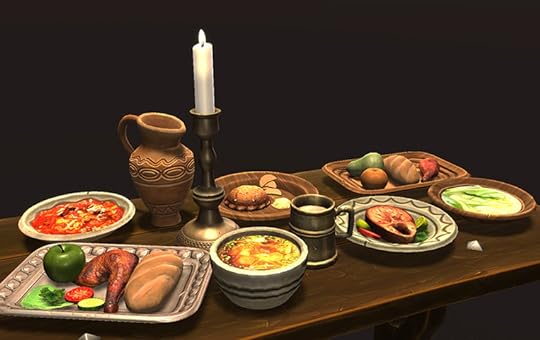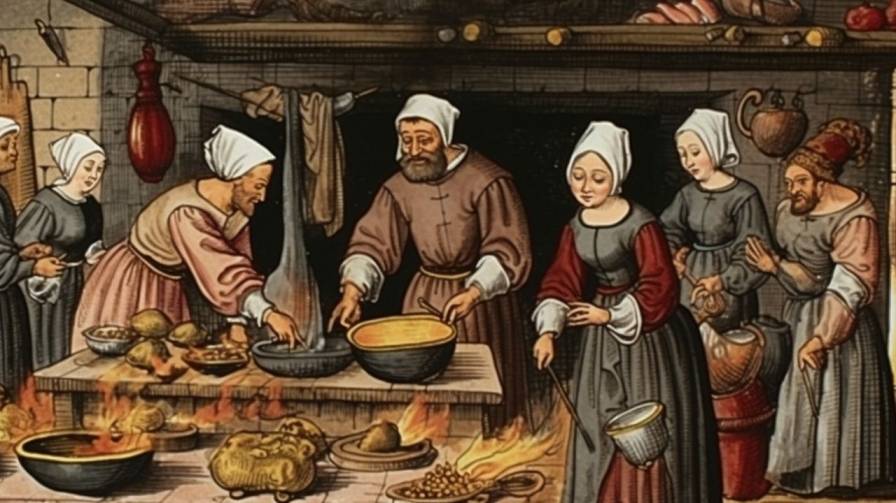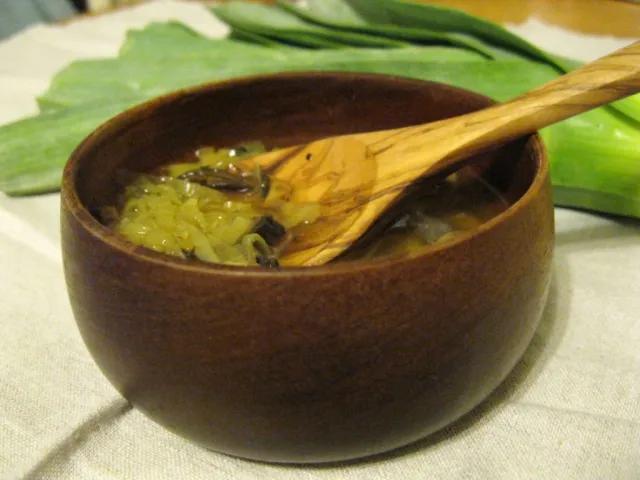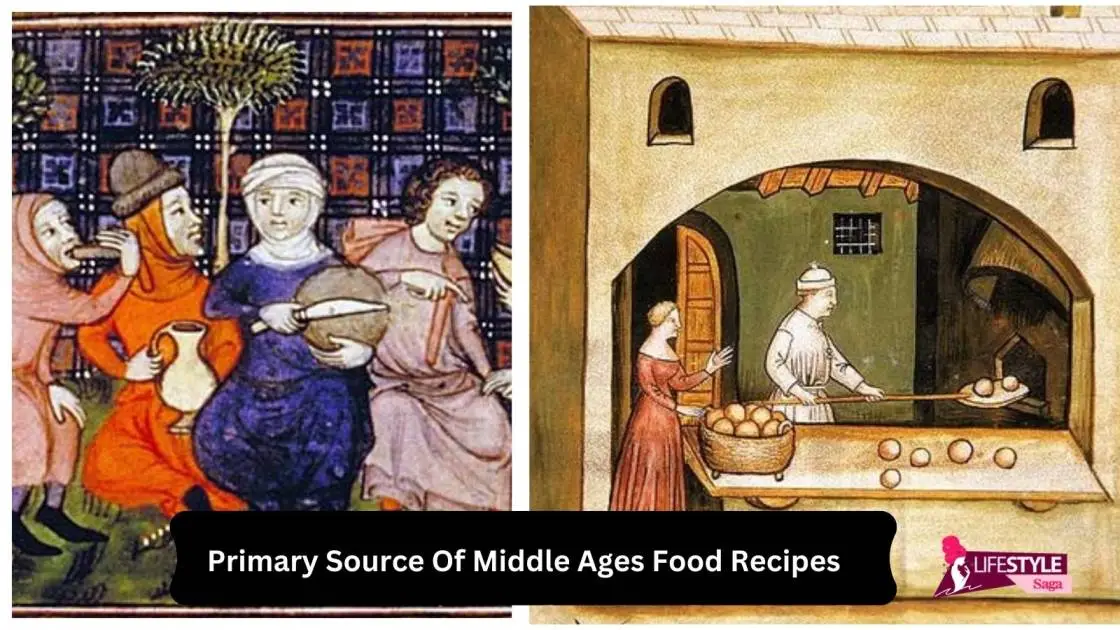Cooking something in the kitchen is in every case great tomfoolery, however considerably more fun when you attempt and produce a kind of Cuisine totally strange to current cooking. This is the thing I did supported by cousin Merlin one cold day when I liked investigating history a piece distinctively this time. It was an extraordinary method for getting behind the manner in which individuals really pondered Primary Source Of Middle Ages Food Recipes.
How precisely did Medieval Cuisine shift to what we eat today? Here and there, not much-they actually ate soup, stew, broil meat assuming that you had cash, and paying little mind to cash endlessly loads of bread. Clearly handled Cuisine is undeniably more Medieval recipes for Kids.
Step-by-Step Instructions for Medieval Cuisine Preparation

Read Also: How does geography influence Mid Atlantic food culture?
Peas Pottage
Pottage was a staple nourishment for the everyman since the beginning of time was a cross between soup, chowder and stew. Basically it was a dish ate in a 'pot' or bowl and during the Medieval period comprised of Cuisine varieties slow-cooked until the separated. Vegetables, oats, and assuming that you were fortunate, meat, was completely used to make pottage. Peas pottage was most likely the model night dinner for a Medieval food menu.
Cherry Pottage
This pottage was totally different to the first, and was passed on to cool and set into a jam like pudding as opposed to a soup. Anyway both are comparable in that they are preferably a one-variety, homogenous bowl dish with no specific pieces of Cuisine left discernable - ideal in the brain of somebody alive quite a while back. Cherry pottage contained white sugar and white bread so would've been a genuine delicacy likely just for Medieval food recipes for peasants.
Leeks and Sops in White Wine
Sops were basically slices of bread absorbed a soup-like fluid prior to being eaten. Individuals of all classes would've delighted in sops maybe with pottage or some other prepared Cuisine and its juices. Despite the fact that this recipe is fundamental, white bread and white wine was held for high societies, so a laborer would most likely have eaten sops of earthy colored bread with cooking juices instead of wine. Priests were said to formally have had the option to eat stewed leeks cooked in water on white bread, however frequently veered off and ate them cooked in white wine.
Living in bygone eras was totally different from the cutting edge period. However, you may be astonished that numerous Medieval recipes are amazingly like a few we actually Primary Source Of Middle Ages Food Recipes.
You May Also Like: Old Fashioned Macaroni Salad With Tuna: Reviving Tradition
10 Unique Cooking Methods of the Medieval Era

1. Whole Wheat Rolls
During bygone eras, it most likely does not shock hear the lower class ate uniquely in contrast to the privileged. In any case, one staple that generally brings together the majority is the entire Medieval food for the poor.
2. Pioneer Woman's Buttered Rosemary Rolls
Rosemary was a marvel plant in bygone eras, getting wellbeing, youth, and love. In any case, this heavenly recipe consolidates them with an exemplary way to deal with making rolls.
On the off chance that you turned up in the Medieval times with these rosemary-bested rolls, you would almost certainly have been the hit of the party. In any case, I'd envision others could see it as a piece inefficient of a strong spice.
3. Bread and Butter Pickles
Despite the fact that cucumbers weren't so predominant during the Medieval times, we were unable to pass on this recipe. You can change it into a more customary Medieval recipe by trading out the cucumber for good roots or cabbage.
This little dish works out in a good way for such countless plates; it's generally a Primary Source Of Middle Ages Food Recipes.
4. Mushroom Puffs
As you can envision, mushroom puffs were a delicacy in bygone eras and served to the high society as a hors d'oeuvre. They could likewise be enhanced with honey and filled in as a sweet.
They regularly included a basic Medieval recipe that utilized stuffed cake shells with cleaved mushrooms, cheddar, eggs, spread, and flavors. We additionally prefer to toss in garlic for its eruption of flavor that no other fixing can Easy medieval food recipes.
Must Read: Top 10 Western American Street Foods
5. Springtime Asparagus Tart

At the point when the asparagus gather would come around every year, one astonishing Medieval recipe is an asparagus tart. In numerous ways, it is almost indistinguishable from the thicker asparagus quiche.
Begin with a flaky cake base and inject the asparagus with cheddar, eggs, and spices. Pop it in the stove until everything turns a decent brilliant brown, and you'll be flabbergasted at the change that occurs.
6. Meatloaf My Way
We're moving somewhat far away as far as you'd generally tell in a Medieval recipe by going with meatloaf, yet it's like the pies they would have had.
Put it on a baked good base and use pieces of meat rather than ground for a more Medieval bend. You can likewise skirt the oats that make this meatloaf my way.
7. Apple Tart

It could sound odd, however Medieval honorability frequently turned up their noses to new organic products. All things considered, they'd utilize different methods to cook and dry out natural products to guarantee they were delightful and protected to consume.
This rundown of dried out apple recipes offers a ton that would be useful, yet investigate the apple tart for the most Medieval.
8. Sarah's Pound Cake Recipe
Once more we're pushing the imperatives of bygone eras by consolidating this pound cake, yet since bread and baked goods were near, it isn't so far of a stretch. Medieval individuals frequently consumed cakes as a celebratory sweet, very much like today.
This pound cake recipe will make you wish they had made it before.
9. Stuffed Eggs
Despite the fact that the present spiced eggs use mayonnaise and mustard that were not piece of the Medieval times, stuffed eggs are amazingly comparative. They were served on merry events.
The essential contrast is that the stuffing was normally made with cheddar and spices like marjoram and Primary Source Of Middle Ages Food Recipes.
10. Cabbage Chowder

At the point when individuals with restricted implies need to find a filling Cuisine, cabbage is consistently really smart. Furthermore, it was during the Medieval times too.
While this Medieval recipe could have looked more fundamental with water and basic flavors, we can wrench up the flavor with a creamier turn. Be that as it may, it wouldn't conflict with custom to throw in bacon, cheddar, or meat.
FAQs
What did royals eat for dinner in medieval times?
As a Tudor Ruler, Henry VIII ate whatever took his extravagant from a colossal smorgasbord. Dishes included game, simmered or served in pies, sheep, venison and swan. During feasts, he may be served more surprising things like conger eel and porpoise. Sweet dishes were frequently served alongside appetizing.
What is a primary source from the Middle Ages?
They can be books, letters, deals, writing, or different reports composed by individuals in the Medieval times . Concentrating on essential sources can assist you with assessing whether current convictions and depictions of the middle age time frame are consistent with life.
How did they cook in the Middle Ages?
They had pots and skillet, which proved to be useful for soups and stews and such. On the off chance that they were cooking a creature, however, they frequently did this on a spit over the fire. They additionally had sifters, colanders, blades, mortar and pestle, different things that we actually utilized today.
What are the primary and secondary sources of the medieval period?
Essential sources, similar to original copies and ancient rarities, offer direct proof from the Medieval times. Auxiliary sources, like academic books, decipher and investigate these materials to give more extensive setting and understanding. Assessing sources is critical for exact verifiable investigation.








